Last updated on April 15th, 2024
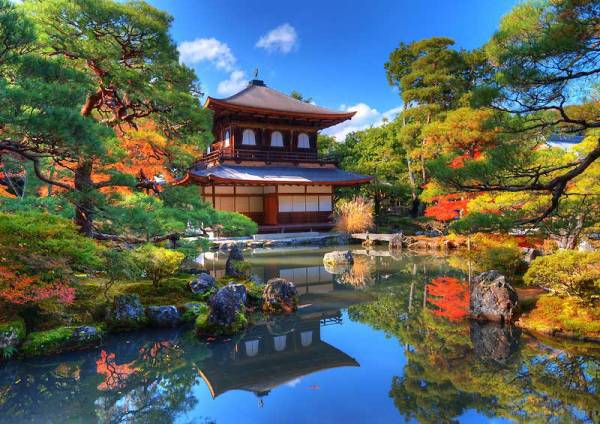
Silver Pavilion, © Can Stock / SeanPavone
Visit Kyoto – Popular Shrines and Temples
- Nijo Castle – a UNESCO World Heritage site from the early 1600s and the former residence of the Tokugawa Shogun. Nijo Castle includes Honmaru Palace and Ninomaru Palace.
- Kinkaku-ji Temple (Golden Pavilion) – a Zen Buddhist temple also known as Rokuon-ji. The Golden Pavilion was rebuilt in 1955 after it was destroyed by fire. When you view the Golden Pavilion from the water with its reflection, this pavilion is truly beautiful.
- Kyoto Imperial Palace – home to the Emperor until 1868. It is surrounded by extensive grounds.
- Kiyomizu-dera Temple – established in 778 and rebuilt several times after fires. Enjoy city views from the terrace and wander the grounds. This is one of the most popular sites in Kyoto.
- Heian Shrine with its red and green coloring is a Shinto shrine. Heian Shrine commemorates Emperor Kammu. The Festival of Ages involves about 2,000 people in the procession on October 22nd each year.
- Fushimi Inari Taisha Shrine – head shrine of the Inari. The Fushimi Inari Taisha Shrine has an extensive torii (gate) leading to the shrine and up the mountain. This shrine is extremely popular.
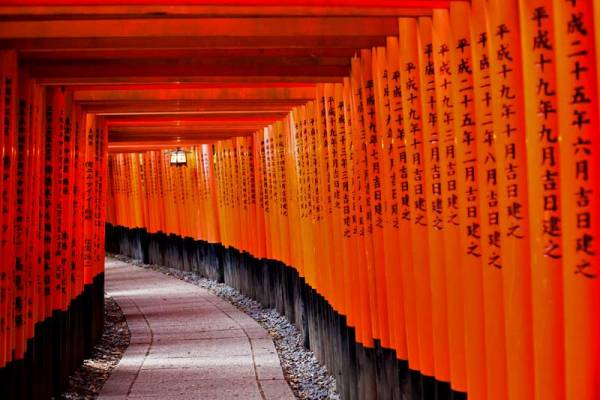
Fushimi Inari Taisha Gate, © Can Stock / M Prusaczyk
Visit Kyoto – More Shrines and Temples
- Ginkaku-ji (The Silver Pavilion) – built for the shogun in the 1400s, but the plan to finish it in silver was never completed.
- Ryoan-ji – Zen Buddhist temple with a dry rock garden that no one can interpret.
- Jingo-ji – a Shingon Buddhist temple on Mount Takao.
- Kitano Tenmangu Shrine – shrine to Michizane Sugawara who died in 903.
- Nishi Honganji Temple – the Western Temple of the Original Vow is the head temple of Jōdo Shinshū.
- Tofukuji Temple – is the head temple of the Tofukuji School of the Rinzai sect of Zen Buddhism. Tofukuji Temple was built in 1236.
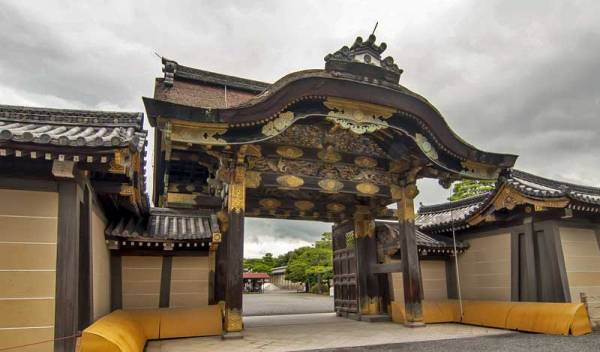
Ninomaru Palace Gate, © Can Stock / changered
Visit Kyoto – Tours
- Kyoto Morning Tour: Kyoto Imperial Palace, Golden Pavilion, Nijo Castle
- Half Day Small-Group Kyoto Cultural Tour
- Kyoto Afternoon Tour: – Fushimi Inari Taisha Shrine, Sanjusangendo, Kiyomizu Temple
- Kyoto Small-Group Bike Tour – cycle along the Kamo River, see the Heian-Jingu Shrine and follow the canals to the Nanzenji Temple.
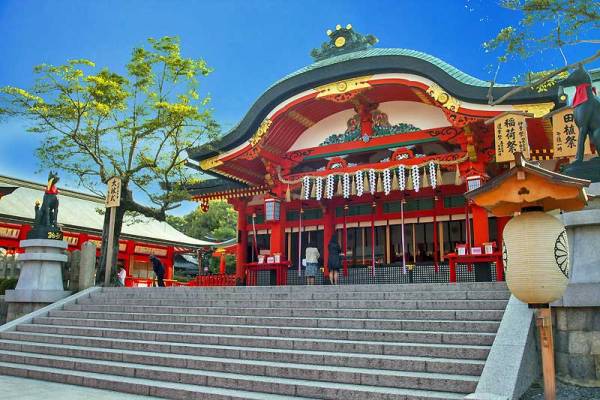
Fushimi Inari Taisha, © Can Stock / nicholashan
Visit Kyoto – Other Sights
- Sanjusangendo Hall – a long wooden hall with 1,001 Kannon statues.
- Gion District – traditional restaurants, tea houses and geishas.
- Shopping on Shijo-Dori Street.
-
Toei Kyoto Studio Park – theme park.
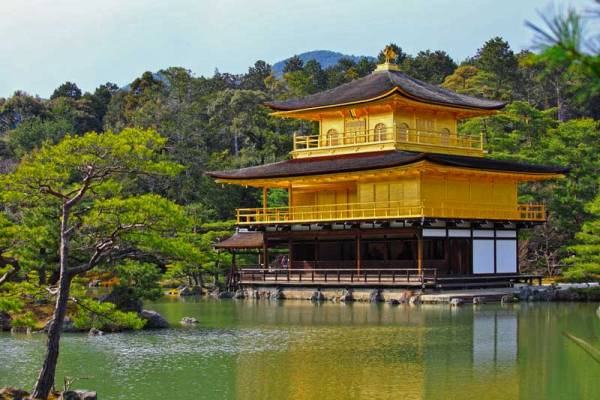
Golden Pavilion, © Can Stock / leungchopan
Things to See and Do near Kyoto
- Arashiyama – Visit Iwatayama Monkey Park, Tenryū-ji temple and the Togetsukyo Bridge (Crossing Moon Bridge)
- Nara Afternoon Tour from Kyoto: Todaiji Temple, Deer Park and Kasuga Shrine
- Kyoto and Nara Day Trip
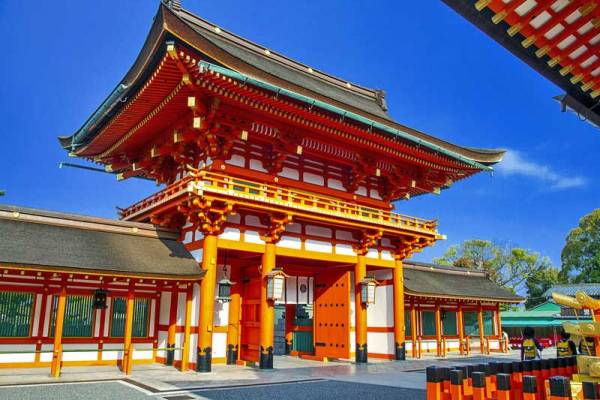
Fushimi Inari Taisha, © Can Stock / nicholashan
Savor the Tastes of Kyoto
- Try a Kyoto style restaurnt in the Gion district of the city, such as Minokou.
- Kyoto Cooking Class, Sake Tasting and Nishiki Food Market Walking Tour
- Maiko Performance with Kaiseki Dinner
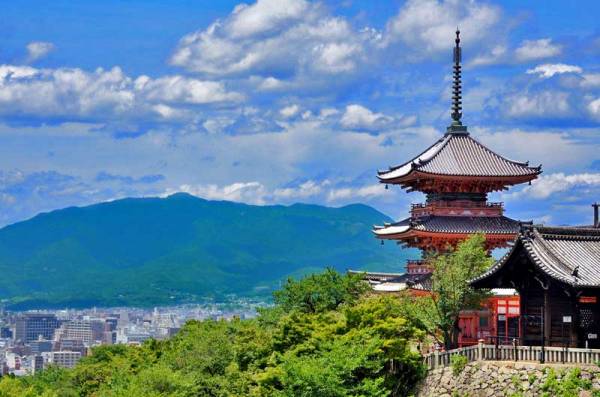
Kiyomizu-dera Temple, © Can Stock / SeanPavone
Visit Kyoto – Hotels
- M’s Plus Shijo Omiya
- Nikko Princess Kyoto
- Hotel Granvia Kyoto
Get to Kyoto
Kyoto doesn’t have a major airport, so most people get to Kyoto on the super efficient Japanese high speed rail system. Most tourists arrive at Narita International Airport in Tokyo and take the JR Tokaido Shinkansen Bullet Train to Kyoto. The bullet trains take less than 3 hours. You can catch glimpses of Mount Fuji on the trip.
Get Around Kyoto
The main rail terminal in Kyoto is Kyoto Station. Kyoto Station connects the skinkansen bullet trains, the subway and the metro system. Kyoto has two subway lines. The Karasuma (K) Line runs north / south directly through Kyoto Station. The Tozai (T) Line runs from southeast Kyoto and then crosses town east / west. The T Line intersects with the K Line north of Kyoto Station. There is also an extensive railway system.
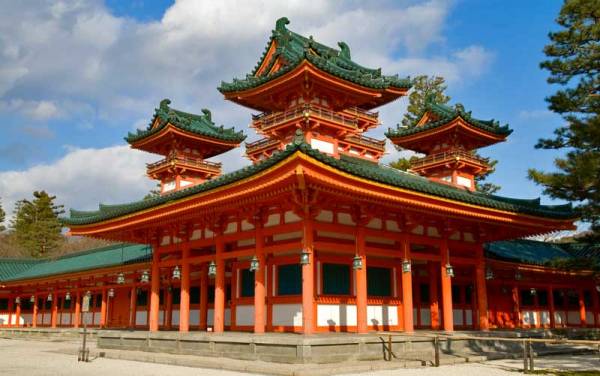
Heian Shrine, © Can Stock / titotito
Unlike most tourists destinations, the sights in Kyoto are not concentrated in a specific area. For visits of a day or two, it’s not worthwhile to try to see the sights by rail, bus or cab. Join an organized tour instead. These can be booked with local hotels upon your arrival. Check out some organized tours in Kyoto.
Kyoto Weather
The Kyoto weather is moderated by the Sea of Japan and the Pacific Ocean. Average temperatures peak in July and August at 88 F (31 C), while lows are about 73 F (23 C). In January and February average highs are 46 F (8 C) and average lows hover around the freezing mark. Rainfall is highest in the summer months, but August has seen lower rainfall in recent years. November and December have the lowest levels of rainfall. Snowfall is rare, but it can be quite heavy and cripple vehicle transportation when it does occur.
Fall might be the best time to visit Kyoto for good weather and brilliant fall colors. The weeks around April 1st are the only time to see the cherry blossoms though.
Visit Kyoto – Background
Nearly 2 million people live in the city of Kyoto. The city is located in the middle of Honshu Island, between Tokyo and Osaka. Kyoto used to be the Imperial capital of Japan and it was the Emperor’s residence from 794 until 1868. The city is called the City of Ten Thousand Holy Shrines for good reason. When you visit Kyoto, you are going to see thousands of temples, shrines, gardens and pagodas. Many of the temples are built along the hills that border the city. The other thing that Kyoto is famous for is the cherry blossoms in the spring.

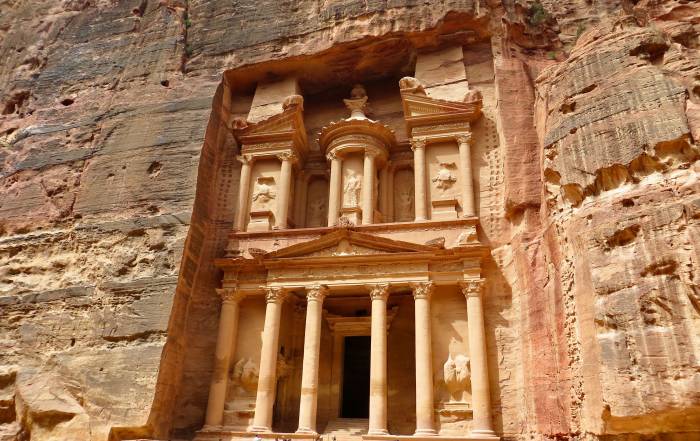
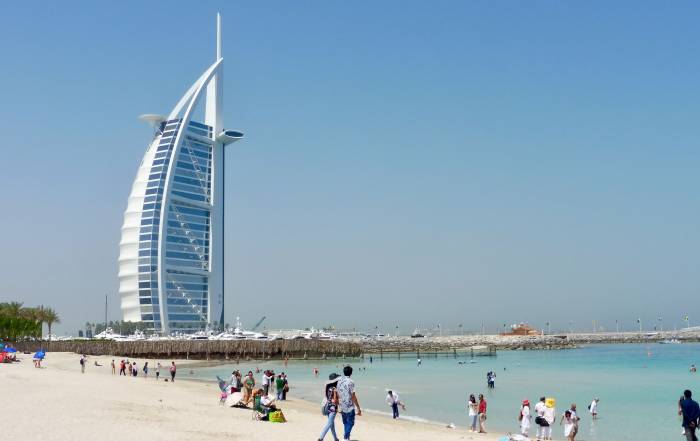
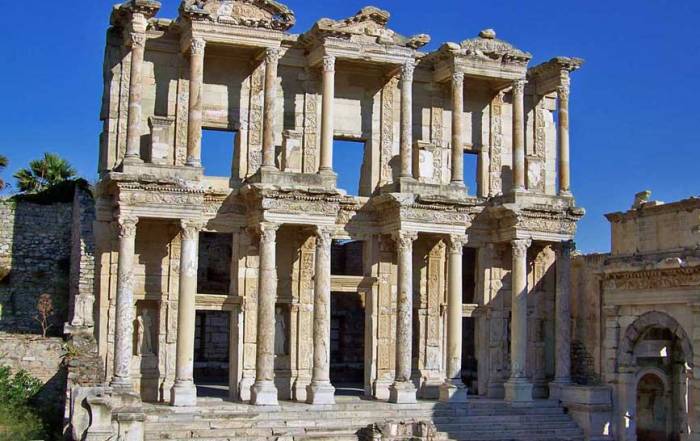
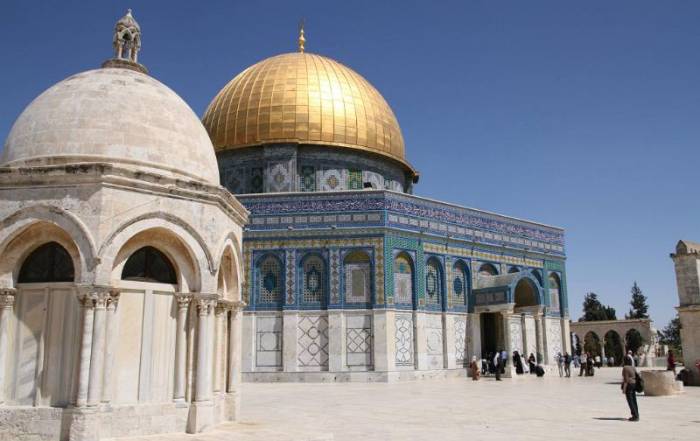
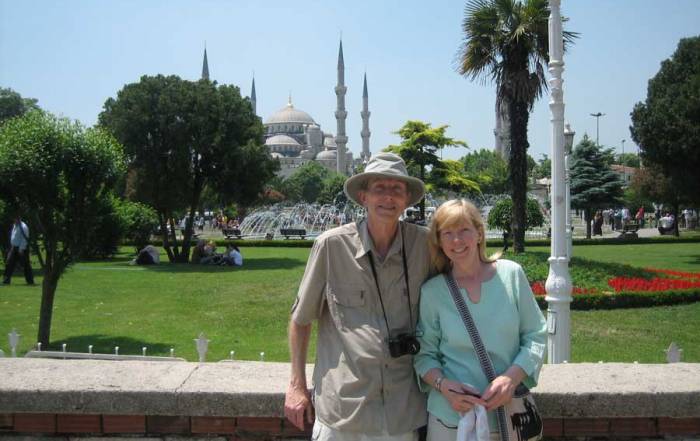
Leave A Comment